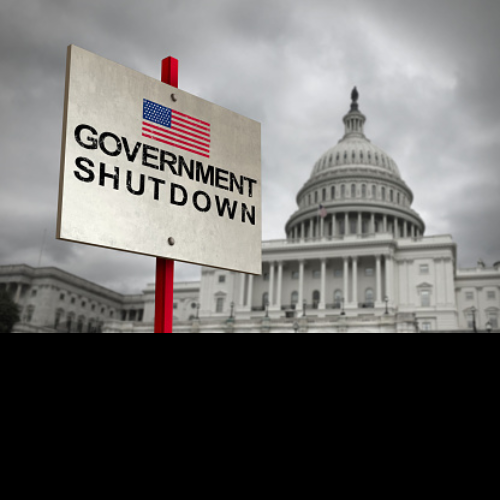September 29th, 2023
As the weekend approaches, the U.S. government is teetering on the brink of a shutdown. The September 30th financial deadline is just around the corner, and the legislative branch appears gridlocked. Despite the Senate’s bipartisan efforts in advancing a stopgap bill, with a significant 76-22 majority, resistance is growing.
Part of the contention arises from GOP adversaries who wish to prolong the legislative process, aiming to afford the House the opportunity to enact its own interim funding bill. This endeavor, led by House Speaker Kevin McCarthy, seeks to strengthen the conservative influence across both legislative chambers.
However, even when taking into consideration potential modifications, such as reallocating Ukraine aid towards increased border security, unity within the House GOP remains elusive. This is evident from the difficulty House leaders face in rallying their members around collective fiscal measures.
As the political maneuvering continues, Speaker McCarthy is set to introduce the House GOP’s short-term financial plan for voting. This move has attracted criticism, most notably from Senate Majority Leader Chuck Schumer, who accuses McCarthy of reneging on an earlier financial agreement with the White House. While the initial pact had earmarked a discretionary spending cap of $1.59 trillion, the latest proposal resonates more with the $1.47 trillion ceiling advocated by the House Freedom Caucus.
Complicating matters, a group of House Republicans has openly voiced their resistance to any temporary funding proposals, pressing for comprehensive annual funding resolutions instead.
With the threat of a shutdown looming, McCarthy finds himself in a tight spot. The Speaker faces a potential political fallout from the shutdown unless he seeks bipartisan support. However, collaborating with the Democrats could jeopardize his position, especially given whispers of a motion to oust him from his leadership role.
In other noteworthy political developments:
Ukrainian Aid: The House has greenlit a $300 million aid package for Ukraine, after initial exclusions from a Defense bill.
Internal GOP Dynamics: Reports highlight growing rifts within the Republican Party, notably between McCarthy and Rep. Matt Gaetz, as the shutdown deadline looms.
Impeachment Inquiry: The Republican-led impeachment investigation into President Biden faces challenges. Some GOP witnesses, instead of supporting the cause, suggest the current evidence isn’t compelling enough for an impeachment. An NBC poll suggests public sentiment isn’t in favor of the hearings either.
Today’s Key Takeaways:
Federal employees are being alerted about the possibility of a government shutdown, and there’s uncertainty regarding plans for the Federal Aviation Administration.
A reminder for students: loan payments are set to recommence on Sunday.
Despite facing pressure from within his party, Senator Bob Menendez remains steadfast in his decision not to step down, highlighting potential prosecutorial errors.
US Credit Rating Could Suffer Further Due to Government Shutdown
Moody’s Warning on US Government Shutdown and Credit Implications
The potential US government shutdown has cast a shadow over global financial markets, with concerns rising about the potential impact on America’s esteemed triple-A credit rating. Moody’s, a renowned credit rating agency and the only one of the Big Three still rating the US with a AAA stable outlook, cautions that political disarray in Washington DC could tarnish this rating.
Their stance is clear: a government shutdown would spotlight the complications rising political divisions introduce to fiscal decisions, especially when the nation is grappling with growing fiscal deficits and escalating debt concerns. With only a brief window available for Capitol Hill to pass a spending bill by October 1, the consequences of missing this deadline would be significant. A failure to act would result in lack of funding, rendering numerous federal employees unpaid and suspending vital government functions.
According to Moody’s analyst, William Foster, the absence of an appropriate fiscal response could detrimentally affect the nation’s credit profile, possibly leading to a downgrade if these challenges go unaddressed. This comes amidst political tensions in Washington DC, particularly among rightwing Republicans in the House of Representatives, who are currently at an impasse with their own party leaders regarding the spending bill.
Despite predictions that any shutdown would be brief and not directly hamper government debt service payments, the current situation has made investors wary of US credit stability. This is exacerbated by rising sovereign bond interest rates, driven by concerns that these rates may remain elevated. Notably, this isn’t the first alarm regarding US governance; Fitch recently lowered the US government’s top credit score, attributing this to declining governance standards after debates on the US debt ceiling.
Finally, Treasury Yields Could Rise Affecting Stock Markets in a Prolonged Government Shutdown
Potential Impact of Government Shutdown on Markets
A potential government shutdown, set to occur this Sunday, is causing unease among investors. Despite predictions that this will not heavily influence the stock market, it’s considered a factor in the S&P 500’s recent decline by over 5% this month. Marc Zabicki, CIO of LPL Financial, indicates the market’s weakening has been in part due to this looming shutdown, but asserts that its ramifications may have already been priced in, suggesting no sharp market reactions in the immediate aftermath.
However, the market’s dip can’t be solely attributed to the potential shutdown. September traditionally experiences weaker stock performance, and there are other factors like increased interest rates, impending student loan payments, worker strikes, and a surge in oil prices. Howard Silverblatt of S&P Dow Jones Indices stresses that the current period is notably volatile.
Historical data shows mixed effects of shutdowns on the market. Since 1990, there have been six such shutdowns, varying in duration. Typically, the S&P 500 has seen positive growth a month post-shutdown, registering gains 5.5% on average. According to Sam Stovall from CFRA Research, past shutdowns generally affect public sentiment more than market dynamics, with most serving as headline events rather than having deep economic implications.
Yet, recent analysis from Wells Fargo, composed by Gery Schollberg and Jennifer Timmerman, posits potential risks this time. They argue that while markets have historically rebounded post-shutdown, the present scenario might see a prolonged shutdown due to an intensifying partisan divide in Congress. This could exacerbate other economic pressures, making stocks more vulnerable to persistent volatility. While shutdowns typically aren’t enduring events, Zabicki warns that current political tensions heighten the likelihood of unforeseen complications.
Disclaimer: This article is intended for informational purposes only. It should not be considered financial or investment advice. We do not hold any form of equity in the securities, cryptocurrency or commodities mentioned in this article as of 09/29/2023. Always consult with a certified financial professional before making any financial decisions.






